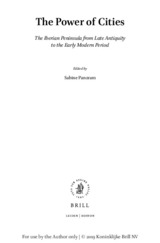Mostrar el registro sencillo del ítem
Ornament of the World: Urban Change in Early Islamic Qurtuba
| dc.contributor.author | Toral-Niehoff, Isabel | |
| dc.contributor.author | León-Muñoz, Alberto | |
| dc.date.accessioned | 2024-01-16T13:13:02Z | |
| dc.date.available | 2024-01-16T13:13:02Z | |
| dc.date.issued | 2019 | |
| dc.identifier.isbn | 978-90-04-39968-6 | |
| dc.identifier.isbn | 978-90-04-39969-3 | |
| dc.identifier.uri | http://hdl.handle.net/10396/26574 | |
| dc.description | Embargado hasta 16/01/2044 | es_ES |
| dc.description.abstract | The city of Córdoba looks back to a long-lasting history rooted in Antiquity, but it undoubtedly reached its heyday in the Umayyad period, when it became the thriving, splendorous capital of the Emirate and later Caliphate (756–1031). This article draws an outline of the profound changes that converted the Late Antique city into a densely populated Medieval Islamic conurbation. | es_ES |
| dc.format.mimetype | application/pdf | es_ES |
| dc.language.iso | eng | es_ES |
| dc.publisher | Brill | es_ES |
| dc.rights | https://creativecommons.org/licenses/by-nc-nd/4.0/ | es_ES |
| dc.source | Toral Niehoff, I., León Muñoz, A. (2019). Cordoba, ornament of the World. Urban Change in Early Islamic Qurṭuba. En S. Panzram (Ed.), The Power of Cities. The Iberian Peninsula from Late Antiquity to the Early Modern Period (pp. 107-160). Brill. https://doi.org/10.1163/9789004399693 | es_ES |
| dc.subject | Urban History | es_ES |
| dc.subject | Al-Andalus | es_ES |
| dc.subject | Islamic History | es_ES |
| dc.subject | Islamic Archaeology | es_ES |
| dc.subject | Early Islamic Archaeology | es_ES |
| dc.subject | Al-Andalus archaeology | es_ES |
| dc.subject | Islamic Urbanism | es_ES |
| dc.subject | Islamic art and architecture | es_ES |
| dc.title | Ornament of the World: Urban Change in Early Islamic Qurtuba | es_ES |
| dc.type | info:eu-repo/semantics/bookPart | es_ES |
| dc.relation.publisherversion | https://doi.org/10.1163/9789004399693 | es_ES |
| dc.rights.accessRights | info:eu-repo/semantics/embargoedAccess | es_ES |
| dc.date.embargoEndDate | info:eu-repo/date/embargoEnd/2044-01-16 |

